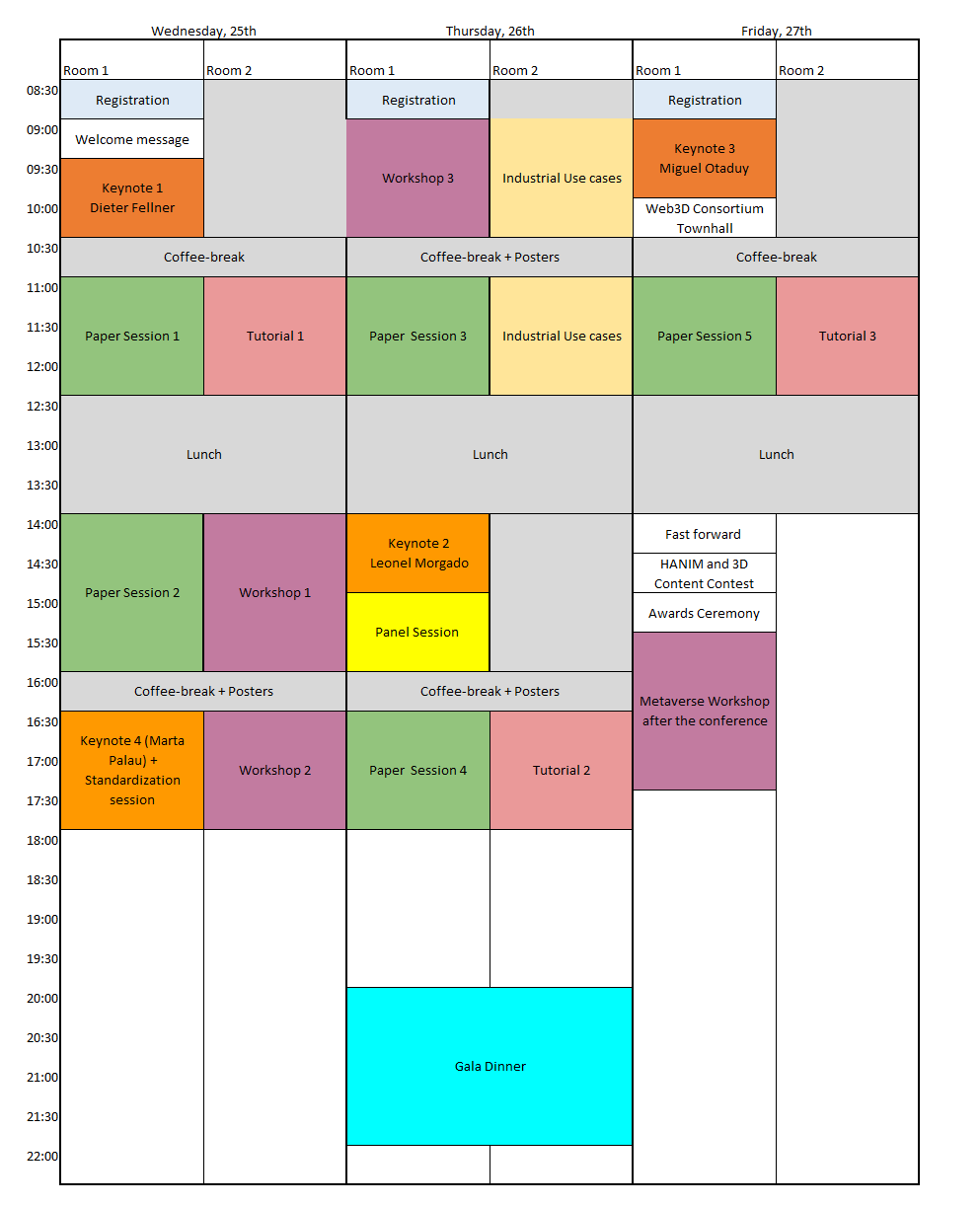Preliminary Program

- Full or short papers presentations – presenting original work in 3D Web research and applications.
- Posters presentations – results of ongoing or recently completed work in 3D web research and application.
- Tutorials – presenting introductory and advanced applications of 3D Web technologies to students and to experienced practitioners.
List of planned tutorials- 3D Reconstruction Tutorial: Data Processing, Surface Reconstruction, and Texture Mapping
- Displaying Interactive 3D Models Without Javascript
- Humanoid Animation ( HAnim) standards development strategies
- Workshops – forum for researchers and practitioners from both the Web and 3D multimedia communities to discuss and exchange positions on current and emergent 3D Web topics.
List of planned workshops- Digital twins for the Bio-environments
- Towards Next Generation eXtended Reality: Data Compilation and Evaluation Strategies
- Humanoid Animation ( HAnim) standards development strategies
- Demonstrations – artists, content designers, and developers share their innovative 3D work at the conference.
- Industrial Use Cases – practitioners to demonstrate how 3D Web technologies may be used in industrial applications.
List of planned Industrial Use Cases- Using Signed Distance Fields to Animate 2d Radar and 3d Turbulence Data with WebGL
- Emerging Platforms in 3D for Art and Cultural Heritage: Applications and Advancements in 3D Imaging for Conservation, Research and Engagement
- Convergence of IoT, 3D & XR: Creating the Industrial Metaverse Through Live Factory Visualisation
- Meeting the Apparel/ Footwear Industries challenges with interoperability, animation chaining and Blender imports
- Interactive 3D Geospatial Visualization of the Port of Gulfport using X3D
- Advances in AI for 3D world and object creation 2024
- Standards Session – provide a meeting for researchers and practitioners from both the Web and 3D multimedia communities to discuss and exchange standardization issues on current and emergent 3D Web topics.
- Panel Session – Leaders from Industry, Standards development organizations and Research Institutes, will debate and discuss the challenges on 3D standards and interoperability?
- Competition – HAnim (Humanoid Animation) 3D Animated Music Video Competition supported by KSA: “Korean Standards Association” and Web3D Consortium.
Questions about the CFP, program and conference should be emailed to program2024@web3d.org.
Share your best work! Submissions are still open!
